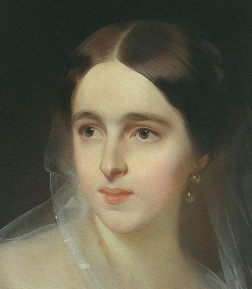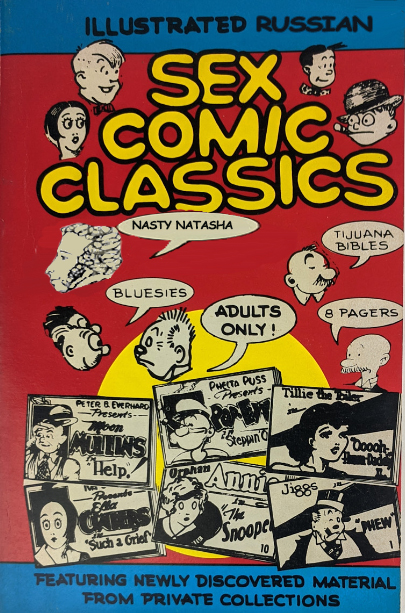 [1]
[1]
by John Helmer, Moscow
@bears_with [2]
The history of Russian sex after the fall of Communist Party rule in 1991 hasn’t been told yet. And it won’t be.
This is because sex between Russians during the Soviet period was a public taboo – its history has been written down as a party and police problem, and buried [3]as a relic of the past [4]. Then in the period of shock therapy which followed during the US-backed Yeltsin administration, Russian sex became a commercial commodity, like everything else. Russian women became prostitutes selling sex, and Russian men who lacked the cash to pay for their time missed out. This is known as one of the liberal reforms.
When the heart is excluded from sex, there’s nothing of value to record for posterity, at least nothing of Russian particularity.
It was also during this period that on account of the money value of access to their sexual parts, Russian women began to say, quite clearly, that for their lovers (or clients) they preferred American Jews because, they said, Russian men were reluctant to pay and violent when asked, whereas American Jews were neither — or so the women said. But the women were just catching up. Russian men, starting from Mikhail Gorbachev and descending downwards, had long displayed their desire to be loved by Americans, and to be paid in return, handsomely. Wanting to be loved by Americans (and Israelis) is a continuing reflex of Russian men; the posture of bending over to receive the love can’t be reported in the history books by the term handsome, unless it’s accompanied by gender reversal. About that, Russians of both sexes are emphatically hostile.
The Russian women’s idea of Jews as non-violent, or at least less violent than Russian men, has been turned on its head — wrong organ — by Russian politicians who have celebrated their Israeli counterparts for their lack of inhibition in using violence, not only against the Arabs, but against their women.
The history of sex in Russia started famously with jealousy and violence, male as well as female.
Alexander Pushkin (lead image, left), who lost his life in a duel prompted by public gossip of his wife, Natalia Goncharova’s (right) infidelity, warned her in a letter [6] of 1833: “You like it when the dogs trail after you like a bitch in heat,” Pushkin wrote. “All you have to do is make sure everyone knows, ‘I love it’. That’s the whole secret of flirting. As long as there’s a trough, the swine will find it.”
Pushkin was talking about the come-on. There’s no record of what Goncharova told Pushkin in reply; it’s still uncertain what she did. Four years later, the story ended violently when Pushkin was fatally wounded in a duel with the man he believed to have been boasting publicly of being Goncharova’s lover, if not the genuine McCoy.
After 1991, in the history of liberal reform sex the Gonacharovas vastly outnumbered the Pushkins. Defending a man’s honour by duelling was chancy, and so satisfaction by pistol was usually obtained by ambush with a shot in the back, as happened between Paul Klebnikov and his Chechen rivals [7].
An equally notorious case was the fate of the woman known as Nastya Rybka who sold stories of her sex life with the Russian aluminium oligarch, Oleg Deripaska [8]. The sex wasn’t her selling point but the political and commercial intelligence she thought she overheard before, during, and after the amours [9]. Prurience and vulgarity of that sort had already been turned into an MI6 plot when Pussy Riot, a sex performance band, were coached [10] by the BBC into staging a sacrilege on the altar of the Christ the Saviour Cathedral in Moscow.
Before that, at the climax of Boris Yeltsin’s potency, two American reporters, Mark Ames and Matt Taibbi, had turned prurience and vulgarity into a fortnightly comedy they published called The Exile. Their publication was distributed free of charge; its costs were financed by advertisements for prostitution and pick-up joints.
 [11]
[11]Left to right: Paul Klebnikov; Anastasia Vashukevich (Nastya Rybka); Nadezhda Tolokonnikova of the Pussy Riot band; Mark Ames.
The website archive on Russian sex as a line of business or politics has been small because, by comparison with oligarch contests and war with the US and NATO, sex is low value [12]. About smallness as a sexual psychopathology, there has been only one analysis of the Russian evidence in thirty years. Click to read. [13]
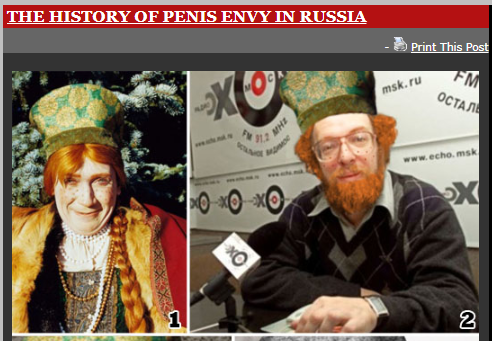 [14]
[14]Lead image of report of April 26, 2013 [13] – left, Vladimir Mamyshev-Monroe, right, Alexander Venediktov. Also analyzed were the pathological cases of Peter Pomerantsev and Masha Gessen. Their predecessors in Russian history appear in Yury Olesha’s novel, Envy, first published [13]in 1927.
As for sexual violence in politics, there was the well-known episode in October 2006 [15], when President Vladimir Putin was hosting Israeli Prime Minister Ehud Olmert in Moscow and failed to notice a hot mike.
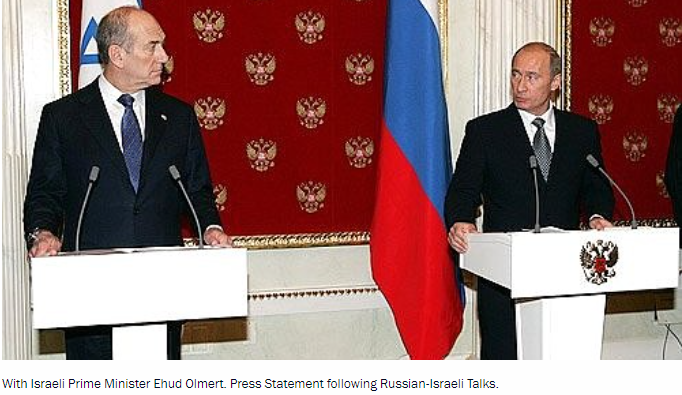 [16]
[16]In the Kremlin record of October 18, 2006 [17], Putin appeared to take Israel’s side in the war Olmert had launched against Lebanon between July 12 and August 14, purportedly to rescue Israeli soldiers captured and held hostage by Hamas and Hezbollah. “The only way to break out of the vicious circle of violence”, Putin said, “is to end mutual accusations, free the hostages and resume peaceful negotiations. It is extremely important to protect the civilian population of Israel and its neighbours from terror.” Source: http://en.kremlin.ru/ [15]
The recorded press statements were anodyne. However, the open microphone reproduced Putin telling Olmert to relay a personal greeting to Israel’s President, Moshe Katsav; at the time he was facing a criminal investigation for multiple rape offences on evidence from ten women stretching back over several years. After several more years of court manoeuvring, Katsav was tried, convicted, and sent to prison for seven years, five of which he served; his early release was backed by the prime minister at the time and Olmert’s successor, Benjamin Netanyahu.
According to the press reports, Putin told Olmert: “Say hello to your president. He really surprised us.” The microphones were then cut off, but a member of the Israeli delegation told Associated Press that Putin went on to say of Katsav: “I met him. He didn’t look like a guy who could be with ten women.” The Israeli ambassador reportedly quipped, “it seems like he’s envious of him,” and Olmert told [18] his host: “I wouldn’t envy him.” The Moscow business newspaper Kommersant reported [19] Putin’s remarks through its Kremlin pool journalist Andrei Kolesnikov: “He turned out to be quite a powerful man. He raped ten women. I never expected it from him. He surprised all of us. We all envy him.”
Putin’s spokesman, Dmitry Peskov, responded to the reports by announcing that Putin’s remark “should not be considered approval of raping women.”
Anti-Putin publication Meduza repeated [20] the story in a report twelve years later in 2018, adding a joke about homosexual rape told in front of Putin by the steel oligarch, Vladimir Lisin. This is the story of the tractor driver and the milkmaid.
Male violence against women in Russia, and the debate on how to deal with it between the Church, the State Duma, police, and prosecutors, can be followed here [21]. The Russian argument over how to curb the promotion of transgender sexuality has been analyzed here [22].
Such arguments and debates are ancient – this is natural. Long before there was a Russian state or an Israeli one – 600 years before the Rus, 1,800 years before Israel – a book was written in Sanskrit on the arts, ethics, and morals of sex. The audience for the book were the Indian ruling courts and wealthy commercial elites of what is today called [23] the Bitar region of north India, then the rising Gupta empire.
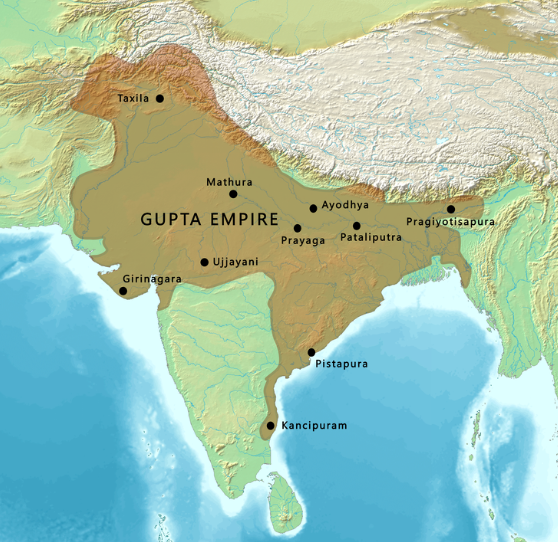 [24]
[24]The book’s author was Mallanaga Vatsyayana about whom almost nothing is known now except his name and his book. Its title is Kama Sutra, sometimes written together as Kamasutra. Kama means desire, love, pleasure or sex, usually all of them combined. Sutra means a treatise or manual.
Thus, the Kama Sutra is probably the oldest sex manual we have today. For its first translator and publisher into English, Richard Burton in 1883, it was a money-spinner, priced for the equivalent of $400 today. Burton and his successors in the British imperial administration of India regarded it as a guide to using women by outsmarting or overpowering them, whichever was required – a kind of Machiavellian Prince for exploiting women’s sex and whatever power or money they also controlled.
That was the interpretation in the East India Company, the British Indian Army, and in the gentlemen’s clubs of London for several hundred years.
That’s a monumental mistake, Wendy Doniger, a Sanskrit scholar at the University of Chicago, has written recently [25]. “There is nothing remotely like [the Kama Sutra] even now. For its time it was astonishingly sophisticated; it was already well-known in India at a time when the Europeans were still swinging in the trees, culturally (and sexually) speaking.” Doniger has retranslated the book and corrected Burton’s mistakes and misrepresentations.
In Doniger’s interpretation, the quality and originality of Vatsyayana’s book have been progressively diminished, then destroyed over the intervening 1,800 years by what has followed in Indian history – Buddhist renunciation; Muslim demolition; British repression. Mistaking the book for its manual on positions and techniques to enhance sexual excitement, modern Indians have opted instead for western-style pornography. The rise of political Hinduism in these days has also adopted some of the violence towards women which Vatsyayana went to lengths to point out is the antithesis of kama, ruling it out of his book and out of civilized, moral sex life as of 250 AD.
Kama is the fundamental moral value of the book, and indeed the purpose of its male and female anatomy, psychology, and neurology in sex. This makes it the antithesis of violence, and of the abuse of power by men against women, or vice versa. On Doniger’s evidence, the book was written for women no less than for men, and also for both genders whose preference was for homosexuality.
If there’s Russian particularity in the history of sex, then how have the themes of the Kama Sutra been interpreted in Russia?
The extraordinary answer is a blank.
Russian soldiers and spies had plenty of military and political reasons during the 19th century “great game” for control [26] of India to monitor what the British and the Indians were doing when their pants were down. But there is no sign that Russian scholars of Sanskrit produced a Russian translation of the Kama Sutra before Burton’s English edition of 1883 or the French translation which followed in 1891. The francophone court of Tsar Nicholas II didn’t have much time to pore over the pictures until they and their court were removed in 1917.
During the Soviet period the Russians who got hold of either the English or French translations, or the pictures, misread Vatsyayana as an advocate of sex as a commodity in the pre-capitalist empire stage or the same thing in the capitalist stage. Either way, the book was condemned as exploiting women and immoral.
A search of the Russian history of the book reveals no translation into Russian until Alexander Syrkin published his version in 1990; subsequent editions of Syrkin’s version appeared in 1993 and 2023. Syrkin was a Sanskrit expert in Moscow but in 1978 he moved to Jerusalem and became a university professor there. His Kama Sutra thus arrived in Russia via Israel, and at a time when Gorbachev was demolishing as much of Communist Party rule as he could. The Russian Kama Sutra was the offspring of Gorbachev’s glasnost. But within a few months it was overtaken by the same market forces as have overtaken the book in India itself. As for the pictures, they couldn’t compete with video pornography.
 [27]
[27]The Russian editions of the Kama Sutra -- all three translated by Alexander Yakovlevich Syrkin [28] (right), a well-known indologist. In the 1960s he began his research career at the Moscow Institute of Oriental Studies of the Academy of Sciences. Since 1978 he has been a professor at the University of Jerusalem.His translations from Sanskrit also introduced the Russian reader to other works of ancient Indian literature such as the Upanishads. Follow Syrkin in podcasts from June 2019 here [29].
In July of 2011 Interfax announced [30] the Kama Sutra “with a national flavour — the ancient Indian treatise on love will be published in the Udmurt language for the first time.” According to the Volga region publisher, the translation “for Udmurts, especially for young people, will be a real sensation.” The translator, Pyotr Zakharov, had been working on it for a decade. He had also been translating ancient Hebrew texts such as King Solomon’s Song of Songs. The work was difficult, he told Interfax, “because in Udmurt there is very little sexual vocabulary. I was obliged not only to select allegorical expressions to denote sexual subtleties, of which, by the way, there are many in the original, but also to come up with completely new words.”
Zakharov acknowledged [30] that 19th century prudery and state censorship have “obscured the book’s value as a literary masterpiece. The first translator of the Kama Sutra is partly to blame for the distorted perception of the book. American historians [Doniger] have discovered that Burton’s English translation, which served as a model for subsequent translations into other languages, contains a lot of inaccuracies. The first Russian translation from Sanskrit was made by the famous indologist Alexander Syrkin…His was the first translation into Russian, accompanied by a detailed scientific commentary by the translator, giving an idea of the high culture of sensory perception in ancient India. Another interesting fact is that initially the Kama Sutra was not illustrated, and most of the poses are described in it very briefly or given only a name tag. Most often, the so-called illustrations to the Kama Sutra are erotic miniatures of Mongolian painting and Indian schools and styles which emerged [much later], between the 16th and the 19th centuries…The Kama Sutra is often perceived in society as a book exclusively about sex, but if you read it carefully, you can see that this is a book about the lifestyle and relationships of people. In my translation I tried, on the one hand, to keep as close as possible to the original, and on the other, to use a modern language that reflects modern realities and problems.”
More than a decade has now elapsed without a sign of either academic or popular Russian interest in the book and its message. Academic focus has almost petered out. In March 2021, Anton Zakharov, a leading researcher at the Institute of Oriental Studies in Moscow, published his study of the way in which Vatsyayana had understood male sperm, and the differences he had observed between men and women at the climax of the sex act. Zakharov concluded that in the Kama Sutra there is a far more positive attitude towards the emission of semen at orgasm than prevailed in other Sanskrit books of the time or in the centuries which have followed [31].
Zakharov also remarked on the fact that Russians have so failed to notice anything of value in the Kama Sutra – except the pictures invented centuries after the book was published. He noticed that Vatsyayana’s understanding of male and female orgasm were so different, the Kama Sutra has provided training, as well as moral instruction on how to achieve them in combination and in reciprocation (aka love).
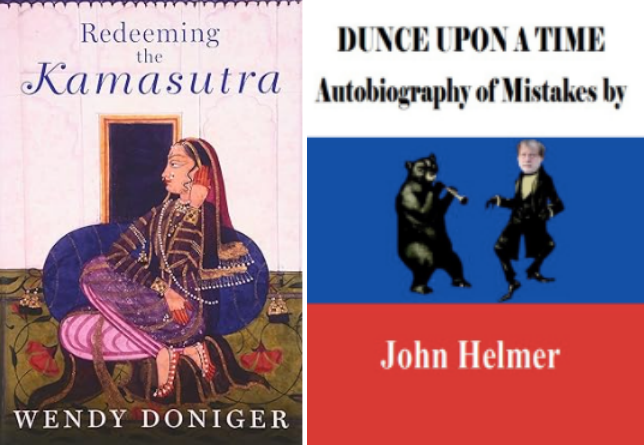 [32]
[32]Read Doniger’s appreciatio [33]n of the revolution in values still to be learned from Vatsyayana’s book. In my new book, read how modern neurology, concentrating on repair of spinal cord damage from war wounds and car accidents, has provided physiological confirmation of Vatsyayana’s ancient close-encounter observation. There is more than that in his book; mine likewise. [34]
